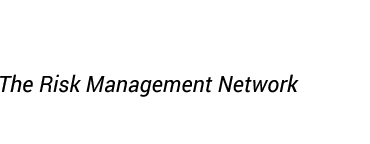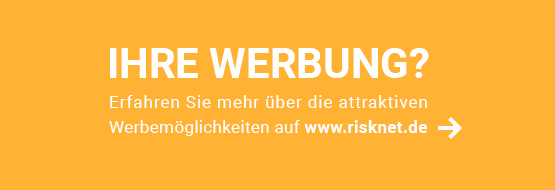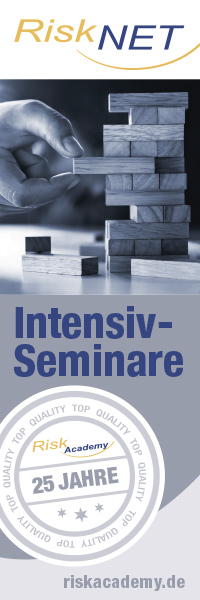Solvency II verpflichtet Unternehmen zu einer risikoadäquaten Sicht auf das Gesamtunternehmen. Beispielhafte Berechnungen des Standardmodells und eines Partialmodells anhand einer Mustergesellschaft zeigen, dass die Rückversicherung weiter eines der einfachsten und flexibelsten Mittel zur Bilanzsteuerung bleibt. Die Reform der Europäischen Union zu einer Modernisierung der Solvabilitätsanforderungen in der Versicherungswirtschaft bedeutet für alle Versicherungsunternehmen eine große Herausforderung, so die Solvency-II-Experten der Münchener Rück. Die Standardansätze zur Bestimmung der Solvabilität sollen zu einer risikoadäquaten Sicht auf die Gesamtsituation des Unternehmens führen, alle Risikotreiber in den Berechnungen berücksichtigt werden. Doch was bedeutet das für Versicherungsunternehmen in der Praxis? Wie wirkt sich die Änderung von einer regelbasierenden Solvenzbestimmung hin zu einer prinzipienbasierenden Ermittlung der Kapitalerfordernisse unter Solvency II auf das vorhandene Risikokapital aus? Und wie lässt sich das Risikokapital durch den Einsatz von Rückversicherung reduzieren?
[Source: MunichRe, Solvency Consulting Knowledge Series, 9/2008]
munichre 14704 Downloads21.11.2008
Datei downloaden Solvency II obliges companies to take a risk-adequate view of their operations as a whole. Sample calculations for a specimen company using the standard model and a partial model show that reinsurance remains one of the simplest and most flexible ways for an insurer to manage its balance sheet.
[Source: MunichRe, Solvency Consulting Knowledge Series, 9/2008]
munichre 12866 Downloads21.11.2008
Datei downloaden Risikomanager gehören eindeutig zu den Gewinnern der aktuellen Finanzkrise – wie auch aller Krisen zuvor. So fordert jüngst der Internationale Währungsfonds (IWF) die Banken auf, ihr Risikomanagement zu professionalisieren. Und auch die Aufsichtsbehörden wurden ermahnt, für mehr Transparenz und eine klare und einheitliche Bewertungspraxis von Risiken zu sorgen. Der IWF wies in diesem Kontext vor allem darauf hin, dass Risiken mit Kapital unterlegt werden müssen. Viele Finanzinstitute hatten im Zuge ihrer Subprime-Engagements ihre Risiken in rechtlich unanbhängige Offshore-Zweckgesellschaften gegründet und so die gesetzliche Eigenmittelunterlegung unterlaufen. Der Artikel skizziert, warum Risikomanager gefragt sind und was sie mitbringen sollten, um erfolgreich zu sein in ihrem Job.
[Quelle: Staufenbiel Banking & Finance 2008/09, S. 14 bis 16.]
Romeike 9869 Downloads30.10.2008
Datei downloaden Bei einer Analyse der US-amerikanischen Subprime-Krise, die sich zu einer weltweiten Finanzkrise ausgeweitet hat, stellt man sich die Frage, ob diese unvorhersehbar und ein unglücklicher Zufall war. Und ist die aktuelle Krise tatsächlich, wie Josef Ackermann, Vorstandsvorsitzender der Deutschen Bank sagt, ein Zeichen von Marktversagen, das staatliche Eingriffe erfordert? Tatsächlich waren vielen Führungskräften von Kreditinstituten potenzielle Risiken aus den extrem gestiegenen Preisen amerikanischer Immobilien und der exzessiven Kreditvergabepolitik ebenso bewusst, wie die vergleichsweise geringe Transparenz vieler derivativer Finanzprodukte (etwa der Collateralized Debt Obligations). Wie konnte es dann zu einer derartigen Krise kommen? Im Folgenden werden Erklärungen zusammengefasst, die teilweise überraschend sein mögen – aber mit einem etwas tieferen Blick in die Finanz- und Bankenlandschaft an vielen Stellen verifiziert werden können.
[Quelle: Gleißner, W./Romeike, F.: Analyse Subprime-Krise: Risikoblindheit und Methodikschwächen, in: RISIKO MANAGER 21/2008, S. 1, 8-12.]
Romeike 9700 Downloads30.10.2008
Datei downloaden The key to truly effective risk management lies in the behavior or markets during times of crisis, when investment value is most at risk. Observing markets under stress teaches important lessons about the role and dynamics of markets and the implications of risk management.
Bookstaber 13010 Downloads10.10.2008
Datei downloaden The 1998 failure of Long-Term Capital Management (LTCM) is said to have nearly blown up the world's financial system. For such a near-catastrophic event, the finance profession has precious little information to draw from. By piecing together publicly available information, this paper draws lessions from risk management practices at LTCM.
Jorion 12169 Downloads10.10.2008
Datei downloaden Plausibility is an important quality criterion for stress test scenarios: scenarios which are highly implausible undermine the credibility of stress tests. In this paper we introduce a measure of plausibility which is applicable under a wide range of distributional assumptions for risk factor changes. We give explicit formulas for the plausibility of scenarios under general elliptical distributions and in the special cases of normally and t-distributed risk factor changes.
[Authors: Thomas Breuer; Gerald Krenn]
Breuer 7911 Downloads10.10.2008
Datei downloaden Risks faced by traders from price movements are sometimes magnified by the actions of other traders. Risk management systems which neglect this feature may give a seriously misleading picture of the true risks. The hazards arising from this potential blindspot are at their most dangerous when the prevailing conventional wisdom lulls traders into a false sense of security on the attractiveness of a trading position. The efforts of one trader to reverse his trade makes more acute the need to follow suit on the part of others. For markets dominated by traders with short time horizons, such interdependence leads to exaggerated price movements. Estimates of 'value at risk' which recognize such interdependence of actions can diverge substantially from those given by conventional techniques.
[Authors: Stephan Morris; Hyun Song]
Morris 7683 Downloads10.10.2008
Datei downloaden The focus of this article is on providing a methodology to implement the second alternative. We propose a tool to measure Value-at-Risk (VaR) associated economic and financial events, and demonstrate how it can be used to measure the financial risk associated with EMU-related stress scenarios. This tool, which we refer to as ESSA - Exploratory Stress Scenario Analysis - allows risk managers to automatically and consistently adjust VaR estimates to reflect their views on market price movements, market uncertainty and co-movements among markets.
Zangari 12489 Downloads10.10.2008
Datei downloaden Using loan-level data, we analyze the quality of subprime mortgage loans by adjusting their performance for differences in borrower characteristics, loan characteristics, and house price appreciation since origination. We find that the quality of loans deteriorated for six consecutive years before the crisis and that securitizers were, to some extent, aware of it. We provide evidence that the rise and fall of the subprime mortgage market follows a classic lending boom-bust scenario, in which unsustainable growth leads to the collapse of the market. Problems could have been detected long before the crisis, but they were masked by high house price appreciation between 2003 and 2005.
[Authors: Yuliya Demyanyk, Federal Reserve Bank of St. Louis / Otto Van Hemert, New York University]
Demyanyk 9655 Downloads01.10.2008
Datei downloaden 






